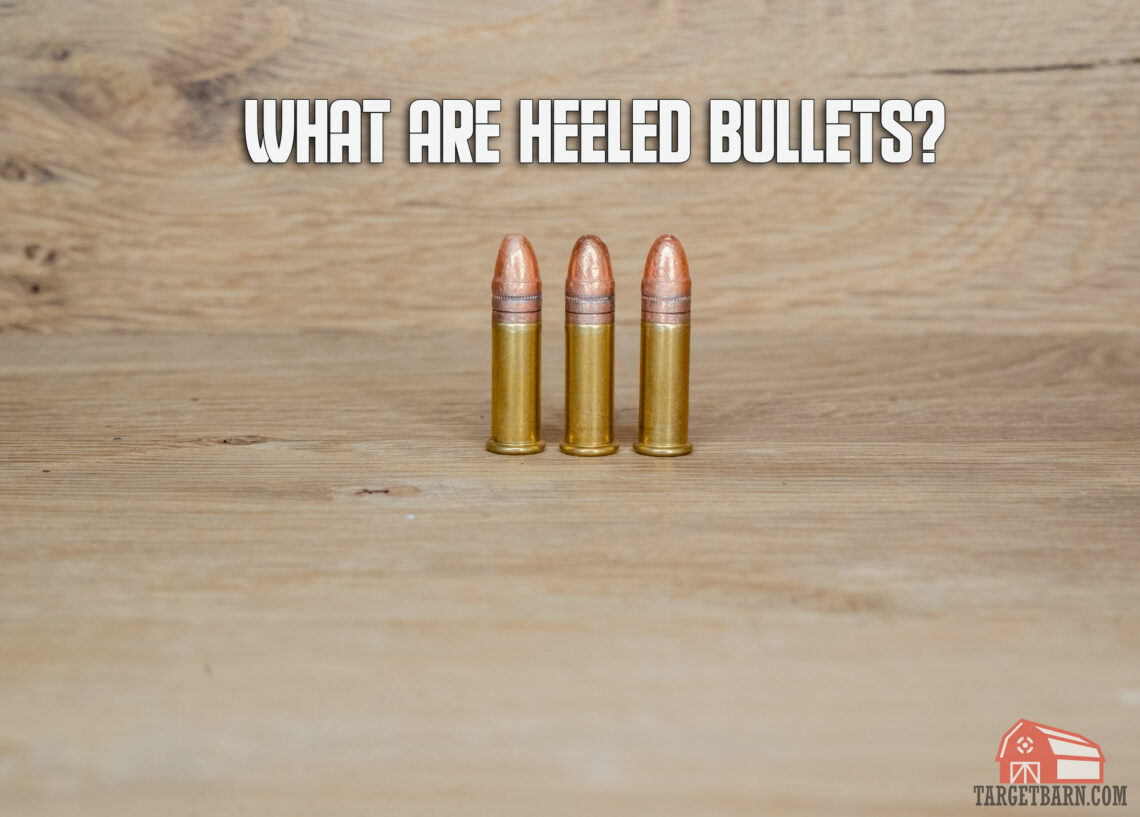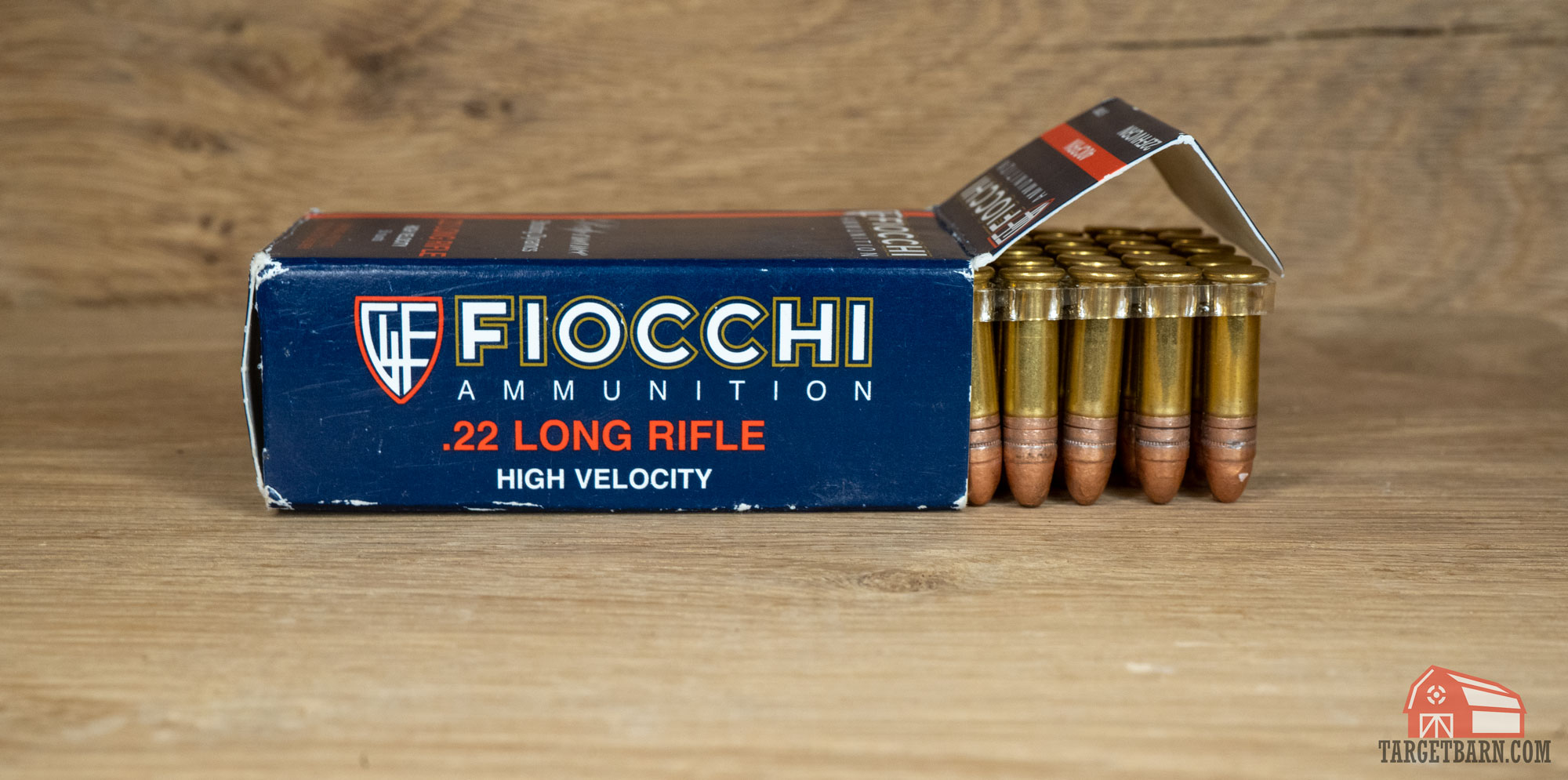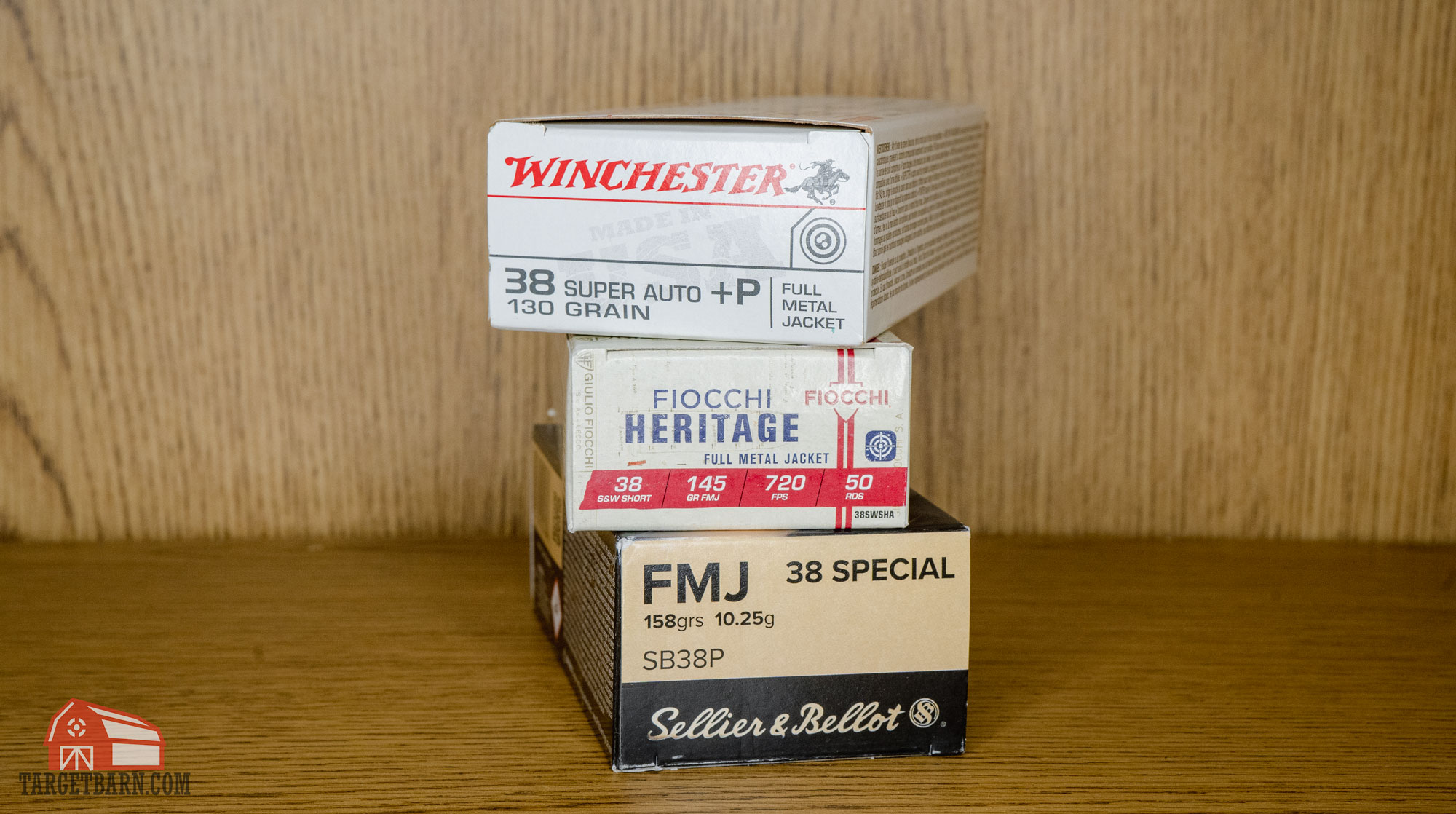There are many bullet types, like the full metal jacket and jacketed hollow point, but a lesser known type is the heeled bullet. Because ammo terminology can be a little confusing, today we explain what a heeled bullet is and where it originated.
What are Heeled Bullets?
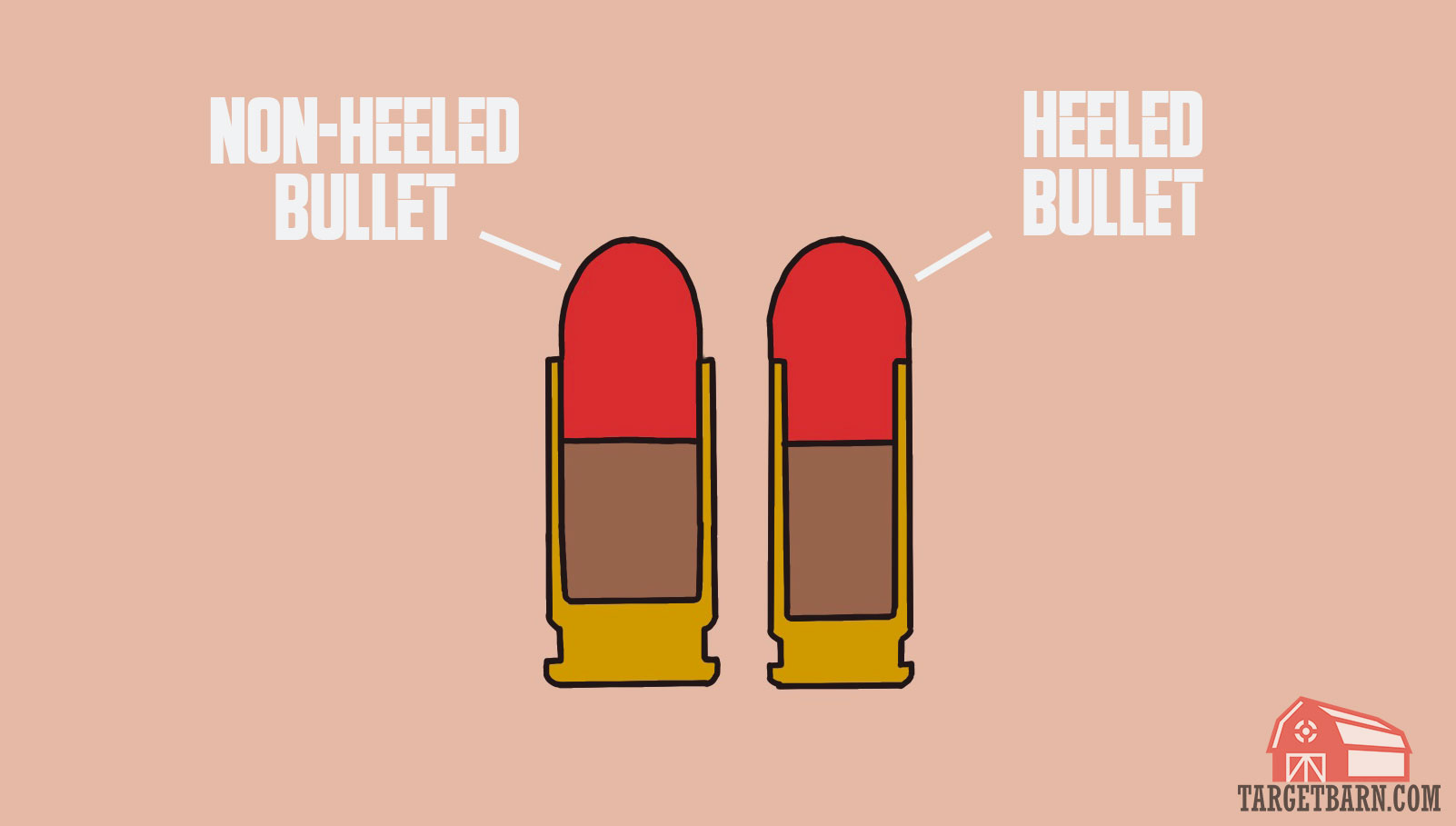
A heeled bullet, also called a heel-base bullet, is a type of bullet that’s body diameter is the same as the outside diameter of the case, while its base has a step, or “heel,” that allows it to sit in the casing. This is opposed to a conventional or non-heeled bullet design. With non-heeled bullets, the projectile sits entirely in the casing. Sometimes, the diameter of the bullet is also the same as the internal diameter of the barrel.
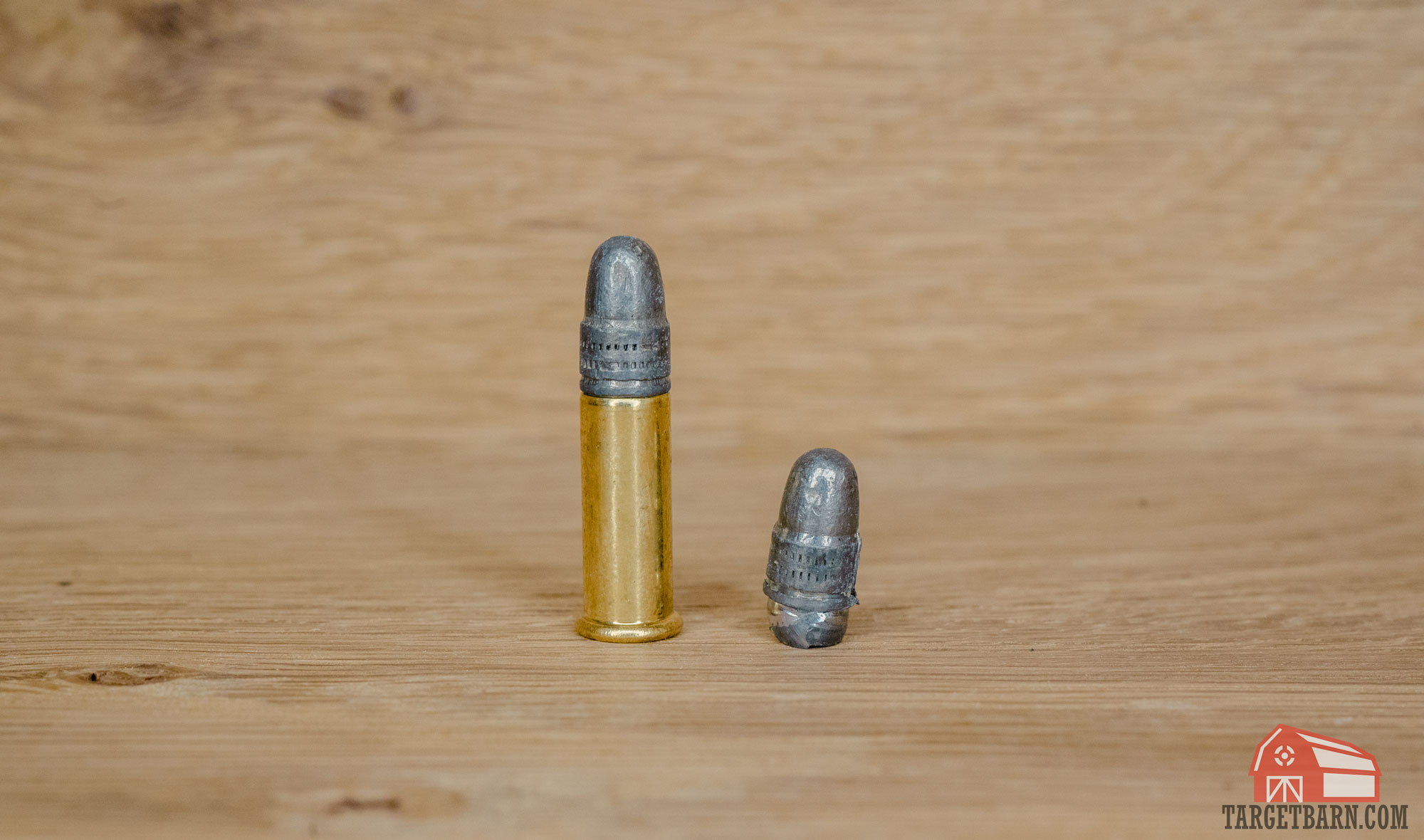
When it comes to the basic parts of ammunition, we know that the bullet is the projectile that sits in the case or casing. With most modern cartridges, the bullet diameter is slightly less than the diameter of the casing. This is so that the bullet sits in the casing. Because a heeled bullet has the same diameter as the casing, it would not fit inside it without the heel.
Cartridges like the .44S&W American and the original .38S&W used heeled bullets, though they’re rare to find today. The most popular cartridge that still uses heeled bullets is the .22LR.
Bullet Lubrication
A major difference between heeled bullets and non-heeled bullets is how they are lubricated. Lead bullets need lubrication to prevent buildup in the bore of the gun. The lubrication sits on the outside of heeled bullets. Outside lubricated bullets have exposed grease grooves and the lubricant is applied on the outside of the bullet. The lubricant sits inside non-heeled lead bullets. Inside-lubricated bullets have grease grooves that are located beneath the mouth of the casing.
If you’ve ever handled .22LR ammo and noticed that your hands were slightly greasy or waxy after, that’s because they are outside-lubricated. It’s one of the disadvantages of outside-lubricated bullets — they pick up dirt and grit much easier. This has the potential to damage the gun’s bore. That’s why why engineers make most modern cartridges inside-lubricated.
History of Heeled Bullets
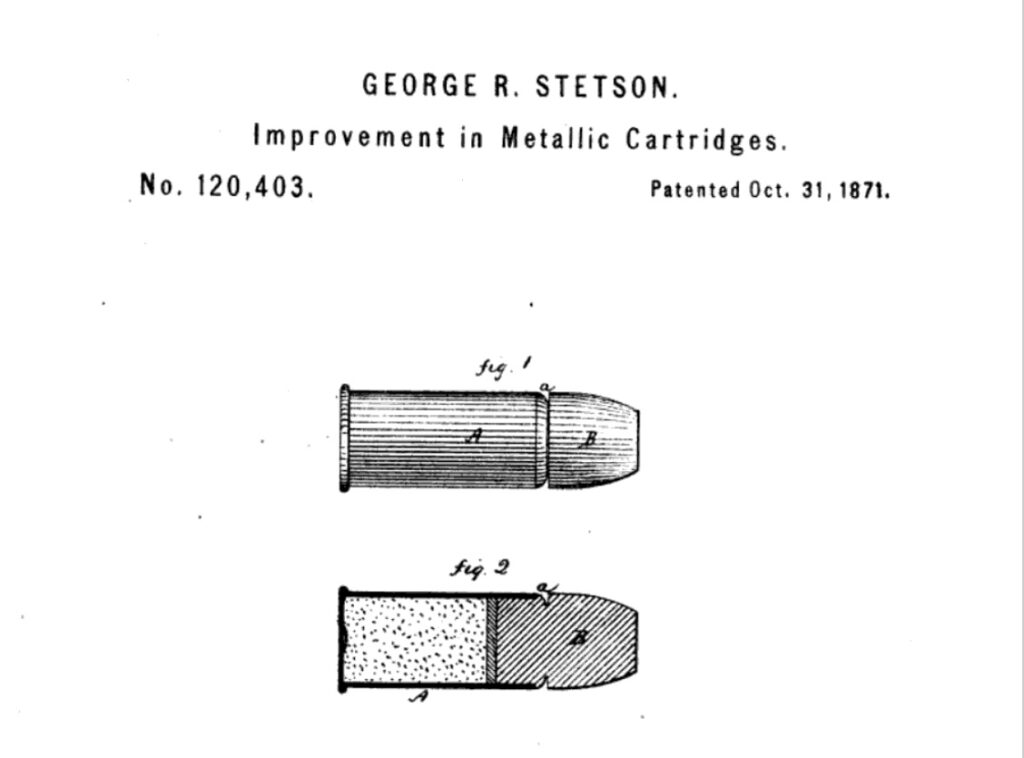
Heeled bullets originated in the blackpowder days, with an early example being the .44 Rimfire. Gunsmith Benjamin Tyler Henry invented the cartridge for use in his lever-action Henry rifle. The .44 rimfire cartridge’s bullet has a diameter of 0.445” which is also the same diameter of the outside of the cartridge case. The bullet’s base has a smaller diameter that allows it to fit inside the case.
In 1871, Goerge R. Stetson with Winchester Repeating Arms Company was granted what is likely the first patent of a heeled bullet. His design improved upon the original .44 Rimfire cartridge, specifically in regards to the lubing and crimping of the bullet.
Caliber Confusion
Over time, cartridge designers converted many bullets with heeled designs to non-heeled. In order to do this, they had to either increase the case diameter, or shrink the bullet and bore diameter. This conversion is the cause of much confusion among caliber designations.
For example, many .38 caliber firearms don’t shoot bullets that are .380 inches as their name would imply. This is because older .38 caliber cartridges used heeled bullets. When bullet designers shrunk the bullet diameter to create non-heeled bullets, they kept the .38 designation. That’s why the .38 Special has a bullet diameter of .357 inches and the .38 Super has a bullet diameter of .356 inches.
So, the next time you have to explain why the .38 Special and .357 Magnum have the same bullet diameter, you can thank heeled bullets for the confusion!

